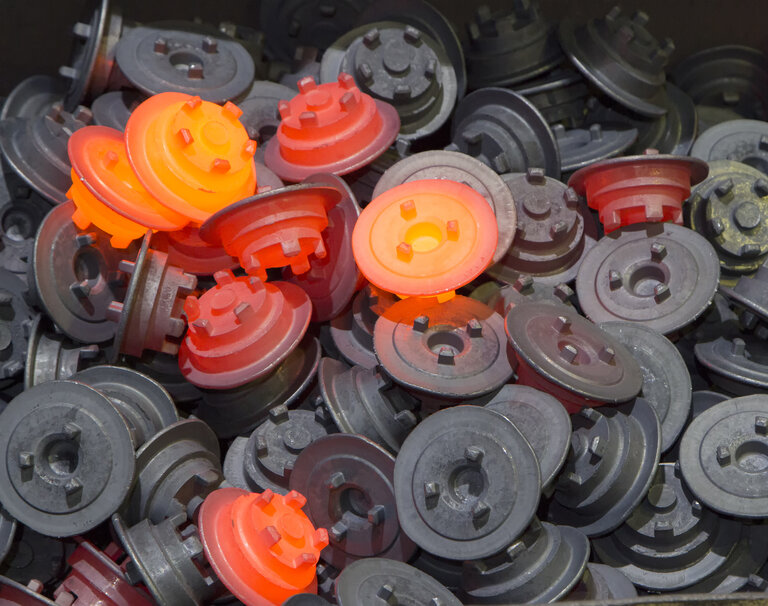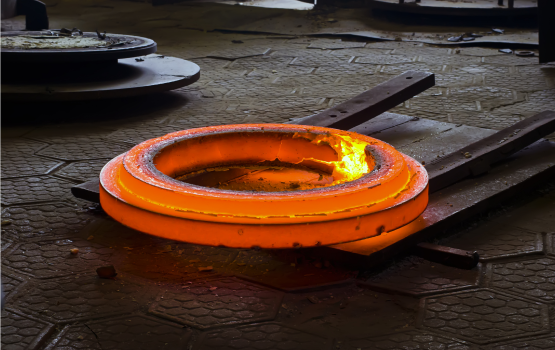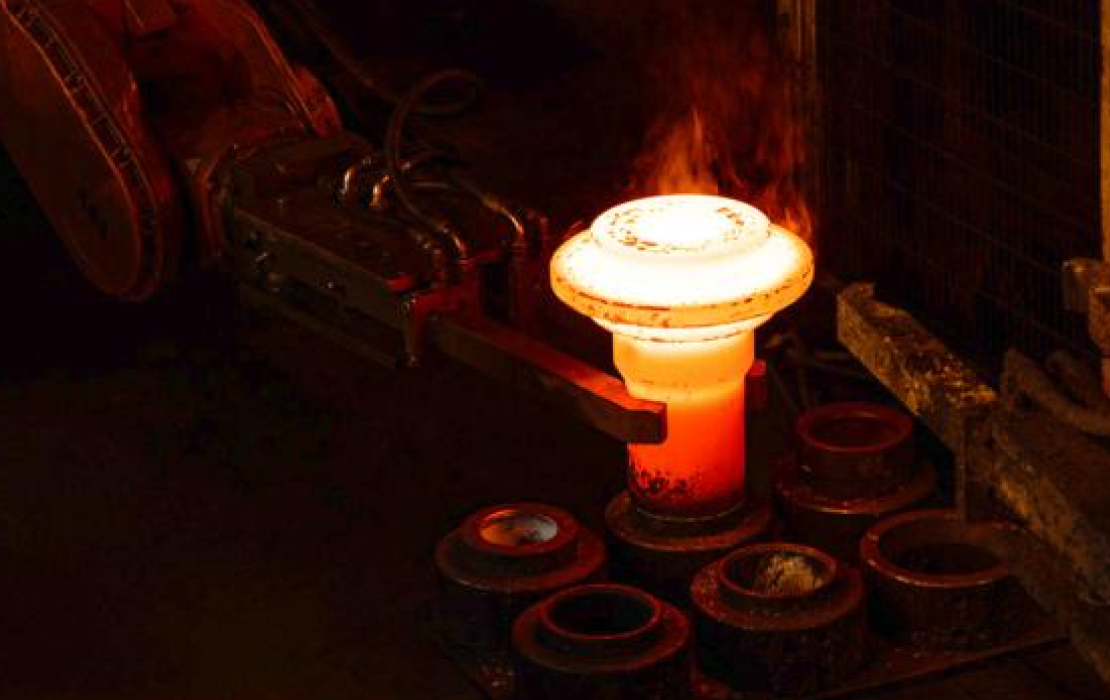
The process of dropping a hammer onto the heated metal to mould it into the shape of the die is known as drop forging. The die is the part of the tool that makes contact with the metal. Drop forging is divided into two types: open-die and closed-die forging. Die surfaces are normally flat, while some have uniquely shaped surfaces for specialized operations.
A hammer strikes and deforms the work piece, which is positioned on a stationary anvil, in open-die forging. Discs, hubs, blocks, shafts, sleeves, cylinders, flats, hexes, and plates are all possible shapes for open-die forgings.

This is also known as impression-die forging, where metal is placed in a die resembling a mould, which is attached to an anvil. Excess metal is squeezed out of the die cavities, which is referred to as "flash” which is removed later. Excavator teeth, connecting rod, control arm, ground foundation bits, gears, shafts, shackles are some of the few items which are manufactured using this method.

In press forging, the main forming factor is compression. The metal sits on a stationary die while a compression die applies continuous pressure, achieving the desired shape. The metal's contact time with the dies is considerably longer than other types of forging, but the forging process benefits from being able to simultaneously deform the entire product, as opposed to a localized section.
Another benefit of press forging is the ability of the manufacturer to monitor and control the specific compression rate. Applications of press forging are numerous, as there are relatively no limits to the size of product that can be created. Press forging can be hot or cold forged. Making of coins and silver articles use this type of forging method.
Roll forging is the process of increasing rods or wires in length. The manufacturer places heated metal bars between two cylindrical rolls with grooves, which rotate and apply progressive pressure to shape the metal. The precisely shaped geometry of these grooves forges the metal part to the desired shape. The benefits of this forging method include the elimination of flashing and a favorable grain structure. While roll forging uses rolls to produce parts and components, it is still considered a metal forging process and not a rolling process.

Roll forging is used to make parts for the automotive industry. It is also used to forge things like knives and hand tools.

It's the production process under which high pressure deforms metal into high-strength components. It is also called the "hot heading process." Using this process, the cross-sectional size of a bar can be increased, either at the ends or at some point along its length. Specially designed upsetting machines using closed dies are used to control size and shape. A few examples of common parts produced using the upset forging process are engine valves, couplings, bolts, screws, and other fasteners.